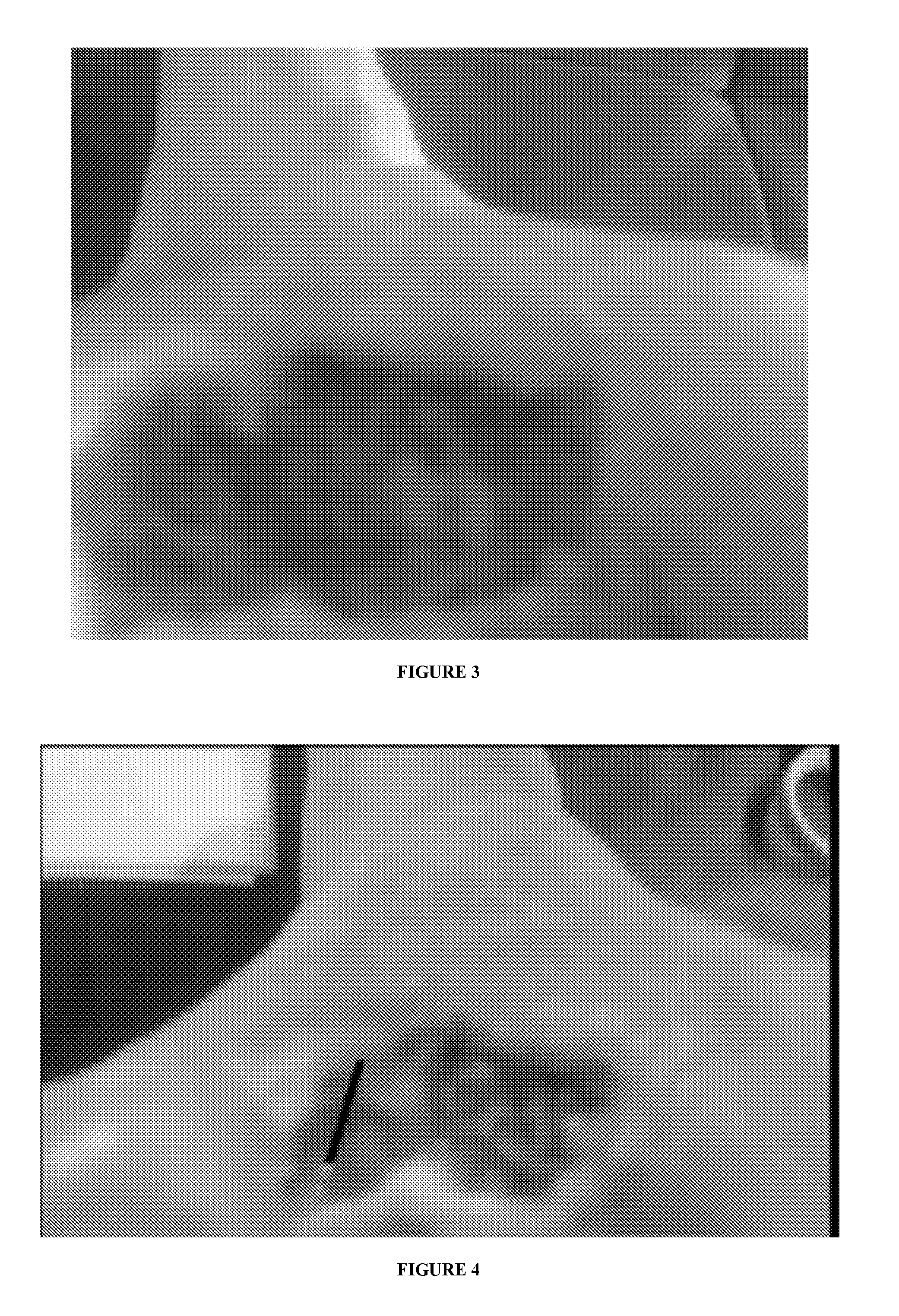Method of managing diabetic foot ulcers, pressure ulcers, venous leg ulcers and associated complication
a technology for diabetic foot ulcers and ulcers, applied in the field of managing diabetic foot ulcers, can solve the problems of diabetic foot ulcers typically occurring, poor nerve signalling, amputation and septicaemia
- Summary
- Abstract
- Description
- Claims
- Application Information
AI Technical Summary
Benefits of technology
Problems solved by technology
Method used
Image
Examples
example 1
Formulation of Instant Composition
[0049]The instant composition comprising type A pentameric procyanidin flavonoid of concentration ranging from about 55% w / w to about 99% w / w, trimers and tetramers of pro cyanidin flavonoid each at concentration ranging from about 0.5% w / w to about 35% w / w is formulated into capsules by blending with about 2% w / w of micro crystalline cellulose, about 0.5% w / w of crospovidone and about 0.2% w / w of magnesium stearate. This mixture is filled in capsules.
[0050]Similar formulation of the instant composition is prepared by addition of appropriate excipient(s) selected from list comprising: granulating agent, binding agent, lubricating agent, disintegrating agent, sweetening agent, glidant, anti-adherent, anti-static agent, surfactant, anti-oxidant, gum, coating agent, coloring agent, flavouring agent, coating agent, plasticizer, preservative, suspending agent, emulsifying agent, plant cellulosic material and spheronization agent or any combination thereo...
example 2
Evaluation of Diabetic Foot Ulcer Healing Activity of Instant Composition in Streptozotocin (STZ) Induced Diabetic Rats With Foot Ulcers
[0058]Diabetes is induced in Sprague-Dawley rats (age about 6-7 weeks, weight—about 180-200 g) using the standard procedure of an intraperitoneal (i.p) injection of Streptozotocin (STZ) (about 50 mg / kg, i.p). After about 48 hours, the rats with glucose level greater than 300 mg / dl (indicative of diabetes) are selected for study.
[0059]After about 14 days of STZ administration, a wound is created and the day is defined as day 0. The wound is created on right hind-paw (foot) of each rat. Each rat is anesthetized with intraperitoneal injection of about 80 mg / kg ketamine. A rectangular pattern is marked on the dorsal surface of the right hind paw (foot) using a flexible transparent plastic template, and then a layer of skin in full thickness with standard area of about 2 mm×5 mm is removed.
[0060]The rats are either administered with vehicle—Distilled wat...
example 3
Effect of Instant Composition In a Subject Suffering From Diabetic Foot Ulcer
[0081]A study is conducted to assess the efficacy of the instant composition in a human subject suffering from Diabetic Foot ulcer. The selected subject (Male, age 85 years) is a chronic diabetic patient diagnosed with Type 2 Diabetes Mellitus for more than 25 years. The subject is on insulin along with multiple oral anti-diabetic drugs. The subject developed a diabetic foot ulcer which resulted in gangrene toe and amputation of two fingers (FIG. 1).
[0082]The amputation wound further becomes a non-healing ulcer with necrotic environment in the wound area. At the start of the study, the subject is at a greater risk of further amputation so as to reduce progress of septic condition.
[0083]The dosage is calculated according to the USFDA guidelines for the industry as per the subject's weight and the subject is given capsules of the instant composition at dose of about 300 mg twice daily for a period of about 11...
PUM
| Property | Measurement | Unit |
|---|---|---|
| Fraction | aaaaa | aaaaa |
| Fraction | aaaaa | aaaaa |
| Fraction | aaaaa | aaaaa |
Abstract
Description
Claims
Application Information
 Login to View More
Login to View More - R&D
- Intellectual Property
- Life Sciences
- Materials
- Tech Scout
- Unparalleled Data Quality
- Higher Quality Content
- 60% Fewer Hallucinations
Browse by: Latest US Patents, China's latest patents, Technical Efficacy Thesaurus, Application Domain, Technology Topic, Popular Technical Reports.
© 2025 PatSnap. All rights reserved.Legal|Privacy policy|Modern Slavery Act Transparency Statement|Sitemap|About US| Contact US: help@patsnap.com



